 W
WThe Alcobaça Formation, previously known as the Guimarota Formation, is a geological formation in Portugal. It dates back to the Oxfordian stage of the Late Jurassic. It is an important source of information on the diversity of Late Jurassic mammals. Many of the fossils were collected from the now disused and flooded Camadas de Guimarota coal mine.
 W
WThe Antalo Limestone, also known as the Antalo Sequence, is a geological formation in Ethiopia. It is between 300 and 800 metres thick and comprises fossiliferous limestones and marls that were deposited in a reef. Marine microfossils have shown an age between 165 and 150 million years.
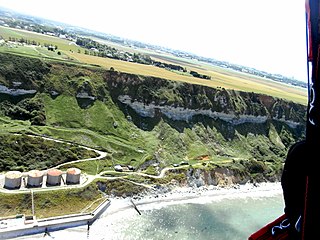 W
WThe Argiles d'Octeville is a geological formation in Normandy, France. It dates back to the Kimmeridgian stage of the Late Jurassic. It is equivalent to the Kimmeridge Clay in England and predominantly consists of claystone, with some limestone. It is well exposed in cliff section at Cap de la Hève
 W
WThe Bell Ranch Formation is a Late Jurassic (Kimmeridgian) geologic formation in eastern and northeastern New Mexico and the western Oklahoma panhandle. Fossil theropod tracks have been reported from the formation.
 W
WThe Cañadón Calcáreo Formation is an Oxfordian to Kimmeridgian-aged geologic formation, from the Cañadón Asfalto Basin in Chubut Province, Argentina, a rift basin that started forming since the earliest Jurassic. It was formerly thought to date into the Cretaceous, but the age has been revised with Uranium Lead dating as likely being solely Late Jurassic in age.
 W
WThe Chacarilla Formation is an Oxfordian to Early Cretaceous geologic formation of the Tarapacá Basin in northern Chile, close to the border with Bolivia. The marine and fluvial formation preserves several dinosaur trackways and has been declared a Natural Sanctuary in 2004.
 W
WThe Fernie Formation is a stratigraphic unit of Jurassic age. It is present in the western part of the Western Canada Sedimentary Basin in western Alberta and northeastern British Columbia. It takes its name from the town of Fernie, British Columbia, and was first defined by W.W. Leach in 1914.
 W
WThe Girón Formation is an extensive geological formation stretching across 325 kilometres (202 mi) from the north in Teorama, Norte de Santander, across the Mesa de Los Santos and Chicamocha Canyon towards west of Nobsa, Boyacá in the northern part of the Altiplano Cundiboyacense in the south. The formation extends across the northern and central part of the Eastern Ranges of the Colombian Andes.
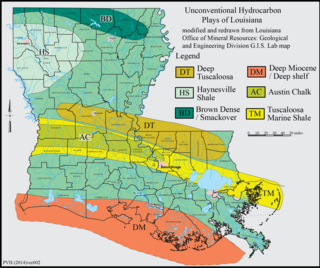 W
WThe Haynesville Shale is an informal, popular name for a Jurassic Period rock formation that underlies large parts of southwestern Arkansas, northwest Louisiana, and East Texas. It lies at depths of 10,500 to 13,000 feet below the land’s surface. It is part of a large rock formation which is known by geologists as the Haynesville Formation. The Haynesville Shale underlies an area of about 9,000 square miles and averages about 200 to 300 feet thick. The Haynesville Shale is overlain by sandstone of the Cotton Valley Group and underlain by limestone of the Smackover Formation.
 W
WThe Iouaridène Formation is a Mesozoic geologic formation in Morocco. Fossil sauropod and theropod tracks have been reported from the formation. It is part of the 'Red Beds' of Morocco alongside the Guettioua Sandstone and Jbel Sidal Formation. The lithology consists of cyclic alternation of meter scale red mudstones and 10's of cm scale carbonate cemented mudstones to very fine sandstones.
 W
WThe Karabastau Formation is a geological formation and lagerstätte in Kazakhstan whose strata date back to the Late Jurassic. It is an important locality for insect fossils that has been studied since the early 20th century, alongside the rarer remains of vertebrates, including pterosaurs, salamanders, lizards and crocodiles.
 W
WThe Katrol Formation is a Mesozoic geologic formation in India. Fossil sauropod tracks have been reported from the formation.
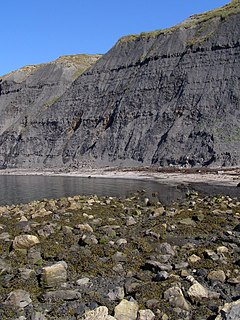 W
WThe Kimmeridge Clay is a sedimentary deposit of fossiliferous marine clay which is of Late Jurassic to lowermost Cretaceous age and occurs in southern and eastern England and in the North Sea. This rock formation is the major source rock for North Sea oil. The fossil fauna of the Kimmeridge Clay includes turtles, crocodiles, sauropods, plesiosaurs, pliosaurs and ichthyosaurs, as well as a number of invertebrate species.
 W
WThe Kiyosu-e Formation is a Middle Jurassic (Callovian) to Early Cretaceous (Berriasian) geologic formation of the Toyonishi Group in Yamaguchi Prefecture, Japan. Fossil ornithopod tracks have been reported from the formation.
 W
WThe Kugitang Formation or Group is an Oxfordian geologic formation in Tajikistan and Uzbekistan and a geologic group in Turkmenistan. Dinosaur remains diagnostic to the genus level are among the fossils that have been recovered from the formation.
 W
WThe La Casita Formation is a geologic formation in Mexico. It preserves fossils dating back to the Kimmeridgian to lowermost Berriasian. It is laterally equivalent to the La Caja Formation and the Pimienta Formation. The ichthyosaur Acuetzpalin is known from the formation, as well as the metriorhynchid Dakosaurus and indeterminate pliosaurs.
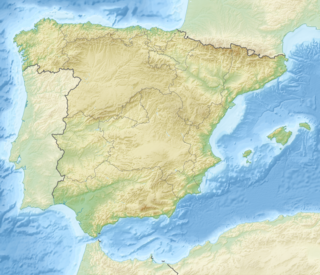 W
WThe Lastres Formation is a geological formation located in Asturias province, northwestern Spain
 W
WLa Matilde Formation is a Jurassic geological formation in the Austral Basin of Santa Cruz Province, Patagonia, Argentina. It is dated to the Middle to Late Jurassic. From the Bathonian age to the Kimmeridgian age at the latest.
 W
WThe Morrison Formation is a distinctive sequence of Upper Jurassic sedimentary rock found in the western United States which has been the most fertile source of dinosaur fossils in North America. It is composed of mudstone, sandstone, siltstone, and limestone and is light gray, greenish gray, or red. Most of the fossils occur in the green siltstone beds and lower sandstones, relics of the rivers and floodplains of the Jurassic period.
 W
WThe Pastos Bons Formation is a Late Jurassic geologic formation of the Parnaíba Basin in Maranhão, northeastern Brazil. The formation forms part of the sag phase of the basin. It overlies the Sardinha Formation and is overlain by the Mosquito Formation. The fluvial to lacustrine sandstones and shales have provided fossils of a coelacanth fish, Parnaibaia maranhaoensis and a paralligatorid named after the formation, Batrachomimus pastosbonensis.
 W
WThe Shaximiao Formation is a Middle to Late Jurassic geological formation in Sichuan, China, most notable for the wealth of dinosaurs fossils that have been excavated from its strata. The Shaximiao Formation is exposed in and around the small township of Dashanpu, situated seven kilometres north-east from Sichuan's third largest city, Zigong, in the Da'an District.
 W
WThe Süntel Formation, previously known as the Kimmeridge Formation, is a geological formation in Germany. It is Late Jurassic in age, spanning the early to late Kimmeridgian stage. It predominantly consists of limestone deposited in shallow marine carbonate ramp conditions.
 W
WThe Tacuarembó Formation is a Late Jurassic (Kimmeridgian) geologic formation of the eponymous department in northern Uruguay. The fluvial to lacustrine sandstones, siltstones and mudstones preserve ichnofossils, turtles, crocodylomorphs, fish and invertebrates.
 W
WThe Tereñes Formation or Tereñes Marl is a Late Jurassic (Kimmeridgian) geologic formation in Asturias, Spain. The grey marls of the formation were deposited in a lagoonal environment at a muddy coast along a temporary inland sea. The lower section of the formation comprises silty and chalky sandstones with desiccation cracks and ripple marks, then becomes a bituminous, prominently ostracod-bearing, pelecypod shell chalk, lime chalk marl and marl. Fossil sauropod tracks have been reported from the formation.
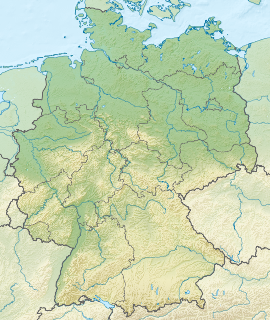 W
WThe Torleite Formation is a geologic formation and Lagerstätte in Germany. It preserves fossils dating back to the Kimmeridgian stage of the Jurassic period. examples of animals that lived in the formation include the a small primitive megalosaurid theropod dinosaur known as Sciurumimus and the extinct bony fish Anaethalion.
 W
WThe Ukureyskaya Formation, also referred to as the Ukurey Formation is a geological formation made up of Middle Jurassic and Late Jurassic layers. It covers large areas around Kulinda. The formation is where the type specimen fossils of Kulindadromeus zabaikalicus were found, alongside a single tooth from a medium-sized theropod of unknown affiliations and other indeterminate ornithschians. Recent dating work suggest that the layers containing Kulindadromeus are Bathonian in age.
 W
WThe Vega Formation is a Late Jurassic (Kimmeridgian) geologic formation of the Ribadesella Group in Asturias, Spain. Dinosaur remains diagnostic to the genus level are among the fossils that have been recovered from the formation.
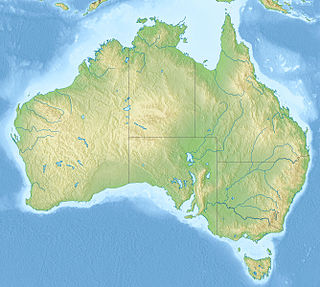 W
WThe Walloon Coal Measures are a Late Jurassic geologic subgroup in Queensland, Australia. Deposited within the Surat Basin it is Oxfordian to early Tithonian in age based on lead-uranium dating of tuffites within the unit. The dinosaur Rhoetosaurus is known from the unit.